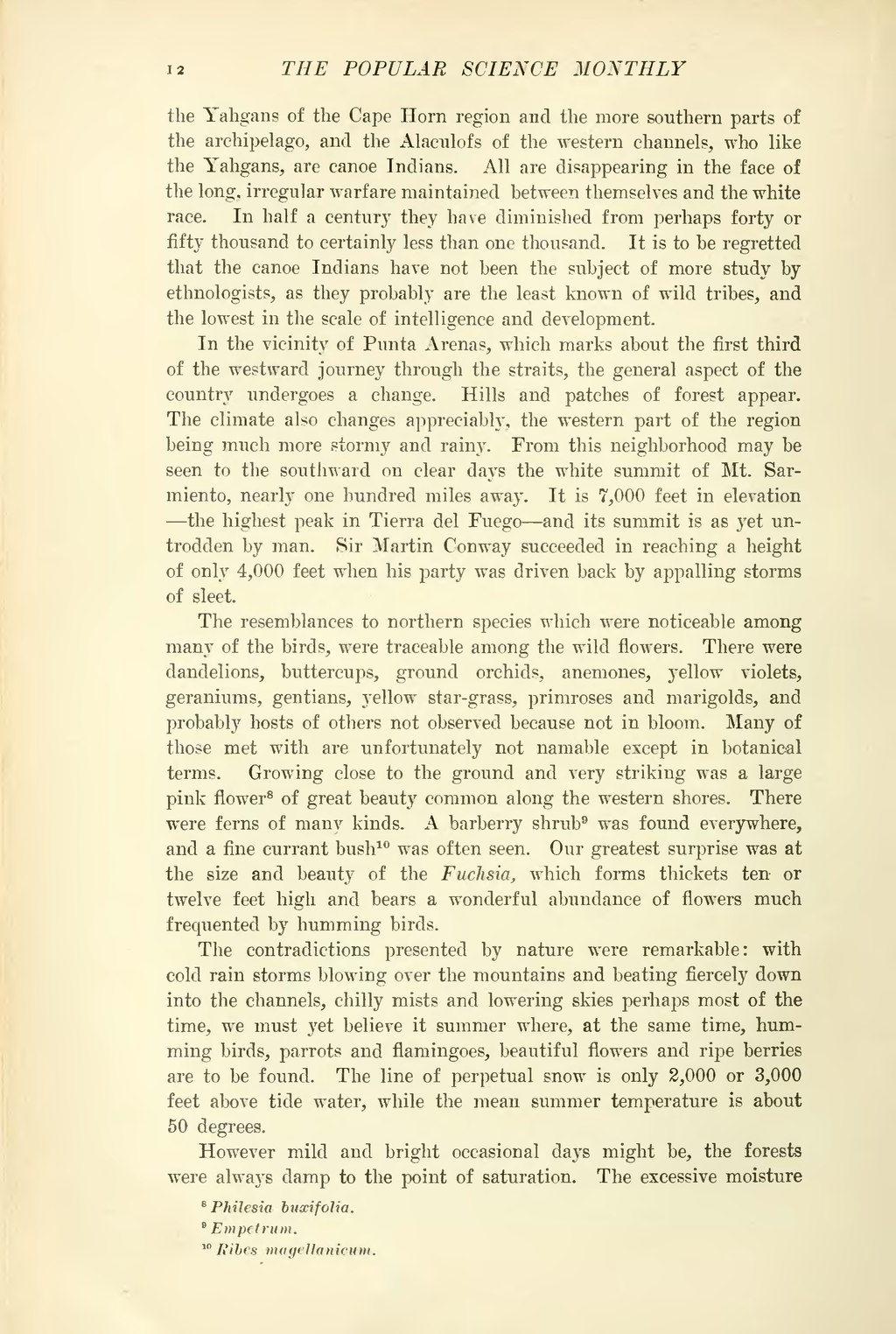the Yahgans of the Cape Horn region and the more southern parts of the archipelago, and the Alaculofs of the western channels, who like the Yahgans, are canoe Indians. All are disappearing in the face of the long, irregular warfare maintained between themselves and the white race. In half a century they have diminished from perhaps forty or fifty thousand to certainly less than one thousand. It is to be regretted that the canoe Indians have not been the subject of more study by ethnologists, as they probably are the least known of wild tribes, and the lowest in the scale of intelligence and development.
In the vicinity of Punta Arenas, which marks about the first third of the westward journey through the straits, the general aspect of the country undergoes a change. Hills and patches of forest appear. The climate also changes appreciably, the western part of the region being much more stormy and rainy. From this neighborhood may be seen to the southward on clear days the white summit of Mt. Sarmiento, nearly one hundred miles away. It is 7,000 feet in elevation—the highest peak in Tierra del Fuego—and its summit is as yet untrodden by man. Sir Martin Conway succeeded in reaching a height of only 4,000 feet when his party was driven back by appalling storms of sleet.
The resemblances to northern species which were noticeable among many of the birds, were traceable among the wild flowers. There were dandelions, buttercups, ground orchids, anemones, yellow violets, geraniums, gentians, yellow star-grass, primroses and marigolds, and probably hosts of others not observed because not in bloom. Many of those met with are unfortunately not namable except in botanical terms. Growing close to the ground and very striking was a large pink flower[1] of great beauty common along the western shores. There were ferns of many kinds. A barberry shrub[2] was found everywhere, and a fine currant bush[3] was often seen. Our greatest surprise was at the size and beauty of the Fuchsia, which forms thickets ten or twelve feet high and bears a wonderful abundance of flowers much frequented by humming birds.
The contradictions presented by nature were remarkable: with cold rain storms blowing over the mountains and beating fiercely down into the channels, chilly mists and lowering skies perhaps most of the time, we must yet believe it summer where, at the same time, humming birds, parrots and flamingoes, beautiful flowers and ripe berries are to be found. The line of perpetual snow is only 2,000 or 3,000 feet above tide water, while the mean summer temperature is about 50 degrees.
However mild and bright occasional days might be, the forests were always damp to the point of saturation. The excessive moisture

